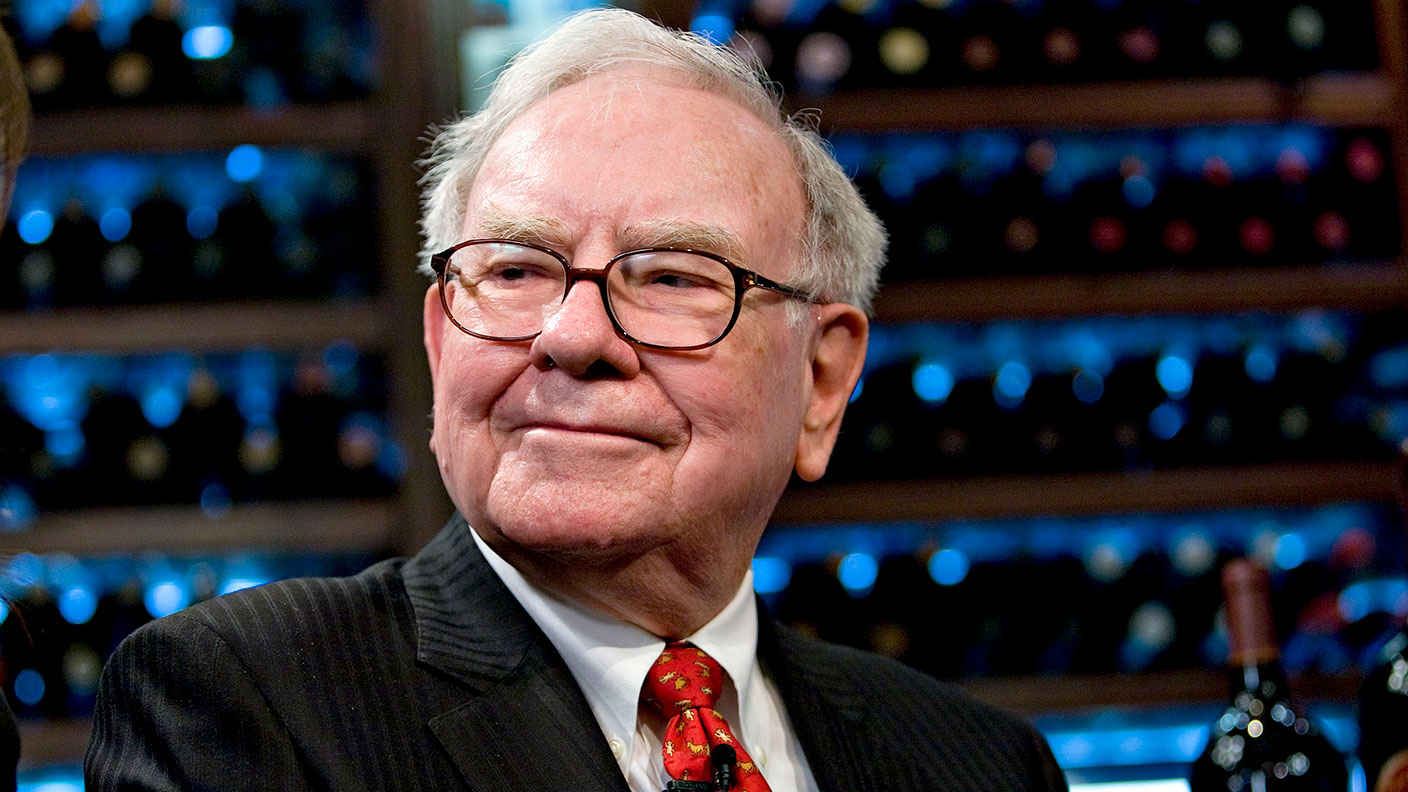Seth Klarman - the world’s greatest living value investor
Value investing - the art of buying something worth a pound for 50 pence - works. Phil Oakley looks at what you can learn from its greatest practitioner - Seth Klarman.
Value investing - the art of buying something worth a pound for 50 pence - works. But who is its greatest practitioner?
Warren Buffett is seen by many as the world's top value investor, and his long-term performance is certainly impressive. But is Buffett really a value investor any more? The likes of Tesco (even after the recent slump) and IBM hardly hit the classic definition of a value stock.
If you want to learn from a modern-day value investor, a better bet is Seth Klarman. Klarman doesn't have Buffett's profile, but he has produced annual returns of around 20% a year for nearly 30 years, simply by buying stuff that's cheap.
Subscribe to MoneyWeek
Subscribe to MoneyWeek today and get your first six magazine issues absolutely FREE

Sign up to Money Morning
Don't miss the latest investment and personal finances news, market analysis, plus money-saving tips with our free twice-daily newsletter
Don't miss the latest investment and personal finances news, market analysis, plus money-saving tips with our free twice-daily newsletter
Better yet, unlike your average hedge fund or private equity manager, this performance has been largely achieved without using any borrowed money (leveraging) or by betting on falling asset prices (known as shorting).
So who is Seth Klarman?
Klarman started his investment career working under top value investors Max Heine and Michael Price. After working with them for two years, he went to Harvard University to study for an MBA. On graduating in the early 1980s, he set up his company, the Baupost Group, in Boston, initially looking after the funds of wealthy families.
Apart from his investment performance, Klarman is famous for writing a book on value investing: Margin of Safety Risk Averse Value Investing Strategies for the Thoughtful Investor. Published in 1991, the book is now out of print, but second hand copies can be found on Amazon for £1,000 or more.
Having realised that the book is giving away some of his competitive edge, it is not surprising that Klarman has no plans for a second edition.
Nine lessons to learn from Seth Klarman
So what do we know about how Klarman invests? Here are some insights into his approach.
What's your advantage over others?
The investment markets are crowded. Thousands of professional investors spend their days trying to find the next big thing, but they can't all win. In order to get ahead you need to do something or know something that others don't. This is not easy. Are you really smarter than the crowd?
Buy what others are selling
Going against the crowd can be profitable. People often sell assets due to temporary, short-term factors. This offers opportunities for investors who can take a longer view. Examples of such situations are litigation, fraud, financial distress and ejection from an index.
Go where others don't
Following on from the above two points, it makes logical sense that you are unlikely to make a lot of money buying FTSE 100 shares, as professional investors follow them too closely. Look at lots of different asset classes. For example:
Opportunities often exist in spin offs' smaller businesses sold by bigger companies. Professional investors often sell holdings in these companies because they are too small and this temporarily depresses their value, spelling a buying opportunity.
Research bonds in bankrupt companies: often these bonds sell for a fraction of what they are worth. If the company is turned around, investors can make massive gains. There are often similar opportunities in distressed property.
Don't confine yourself to domestic markets. Foreign markets are often less crowded and can be subject to levels of political and regulatory uncertainty that present opportunities. In the preface to the sixth edition of Benjamin Graham and David Dodd's book, Security Analysis', Klarman uses the example of South Korea in the early 2000s where investor pessimism saw multinational companies selling for as low as one or two times their annual cash flow. Smart investors made a killing buying these stocks.
Focus on risk before you start thinking about returns
Research shows the pain of losing 50% of your money far outweighs the pleasure to be had from making a 50% return. To be successful as an investor you must focus your research on the risks of a company's business model and its industry. Remember that the first rule of investment is not to lose money. Also remember and this is particularly pertinent to technology companies that today's good business may not be tomorrow's winner (see my colleague Tim Bennett's points on the importance of economic moats for more on this).
You are buying a stake in a business, not a piece of paper
Investment success comes from buying the cash flows of businesses for less than they are worth. These cash flows come from the real world, not punting numbers on a computer screen. So focus on free cash flow rather than profits. And look at balance sheets to see risks like too much debt or big pension fund liabilities.
Know when to sell
Value investors start selling when assets are 10-20% below what they think they are worth. Owning fully valued assets is a form of speculation you are betting on someone paying more than they are worth, not on the market recognising the true value of the assets.
Don't invest with borrowed money
The ability to sleep well at night is more important than a few more percentage gains.
Don't rely on the market to provide your investment returns
If bond coupons or stock dividends (paid out by companies) can provide a large chunk of your returns, you are less reliant on fickle and volatile markets for capital gains. Buying bonds below their redemption value is another good strategy.
Don't be afraid to do nothing
Always hold cash when cheap assets are scarce. Be prepared to wait.
How to follow Klarman
Very few private investors will be rich enough to invest in Klarman's funds, but that doesn't mean you can't follow what he is doing. Every three months Baupost is obliged to file a form with the US Securities and Exchange Commission (SEC) known as a 13F (you can read it here) which lists the investments in Klarman's $3bn fund.
His latest filing shows his main investments as of 30 September 2011.
| BP | 16.7% |
| Hewlett Packard | 15.7% |
| Viasat | 11.8% |
| News Corp | 11% |
| Microsoft | 10% |
You can see that many of the shares listed above have been battered by investor pessimism in recent years. Not all of them would have been comfortable to buy into (picking up BP in the wake of the Gulf of Mexico disaster certainly wasn't, or News Corp's following the hacking scandal), but that's partly the point - Klarman's value investing style clearly depends as much on investor psychology as on hard numbers.
However, there is no doubt that most of what he does works well. Considering the nine points noted above before you take the plunge into any asset in the future will almost certainly make you a better investor.
We have stopped taking comments on this story due to a series of posts regarding a controversial quarry in Canada in which Seth Klarman's Baupost vehicle owns a stake. We have no house view on this subject if you are interested in finding out more, feel free to Google "baupost megaquarry" - but the posts are not relevant to the wider topic of value investing discussed here.
Get the latest financial news, insights and expert analysis from our award-winning MoneyWeek team, to help you understand what really matters when it comes to your finances.
Phil spent 13 years as an investment analyst for both stockbroking and fund management companies.
After graduating with a MSc in International Banking, Economics & Finance from Liverpool Business School in 1996, Phil went to work for BWD Rensburg, a Liverpool based investment manager. In 2001, he joined ABN AMRO as a transport analyst. After a brief spell as a food retail analyst, he spent five years with ABN's very successful UK Smaller Companies team where he covered engineering, transport and support services stocks.
In 2007, Phil joined Halbis Capital Management as a European equities analyst. He began writing for MoneyWeek in 2010.
-
 Buying infrastructure funds - 'cheap is not always cheerful'
Buying infrastructure funds - 'cheap is not always cheerful'Opinion Well-balanced infrastructure funds offer better prospects than high-yielding renewables funds, says Max King
-
 The new products and growth sectors driving America’s long-term winners
The new products and growth sectors driving America’s long-term winnersOpinion Felix Wintle, manager of the VT Tyndall North American Fund, highlights three favourite US stocks where he'd put his money
-
 How Warren Buffett built his fortune
How Warren Buffett built his fortuneAnalysis Warren Buffett is considered by many to be the best investor of all time. We examine how much Buffett is worth and how he made his fortune.
-
Why investment forecasting is futile
Opinion Every year events prove that forecasting is futile and 2020 was no exception, says Bill Miller, chairman and chief investment officer of Miller Value Partners.
-
 Warren Buffett: investors should ignore scary headlines
Warren Buffett: investors should ignore scary headlinesOpinion You wouldn’t buy or sell your own business on the back of today's headlines, sasy Warren Buffett, so why sell shares in good firms?
-
 The world’s greatest investors: Francisco García Paramés
The world’s greatest investors: Francisco García ParamésTutorials Spanish value investor Francisco García Paramés has enjoyed annualised returns of 16% over 25 years.
-
 The world’s greatest investors: Cheah Cheng Hye
The world’s greatest investors: Cheah Cheng HyeFeatures Cheah Cheng Hye – dubbed “Goldfinger” and the “Asian Warren Buffett” – is the co-founder and chairman of Hong Kong-based Value Partners Group.
-
 Thomas Russo: the world’s greatest investors
Thomas Russo: the world’s greatest investorsFeatures A focus on long-term compounding became the core of Thomas Russo’s investment strategy.
-
 Charlie Munger: the world’s greatest investors
Charlie Munger: the world’s greatest investorsFeatures Charlie Munger was originally a value investor, buying companies that were trading below their book value.
-
 Paul Samuelson: the world’s greatest investors
Paul Samuelson: the world’s greatest investorsFeatures Paul Samuelson was one of the key people involved in the development of the efficient market hypothesis.